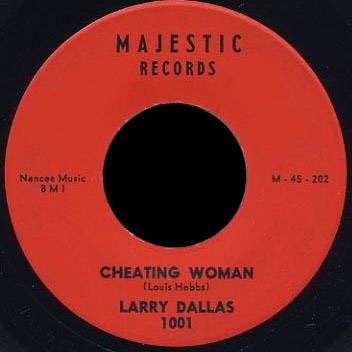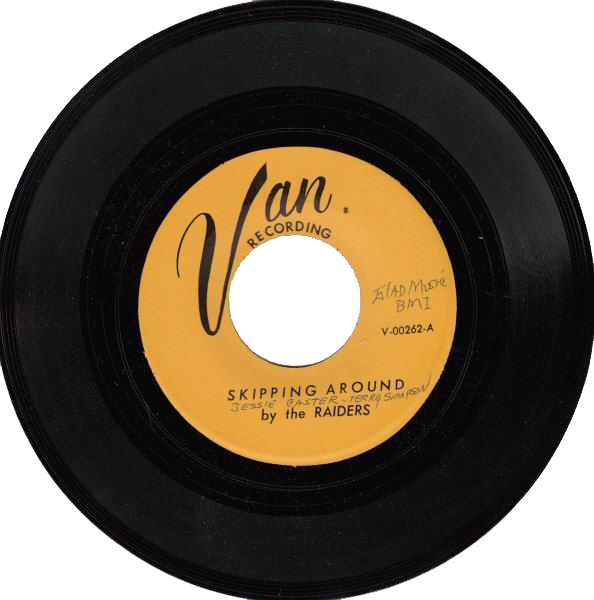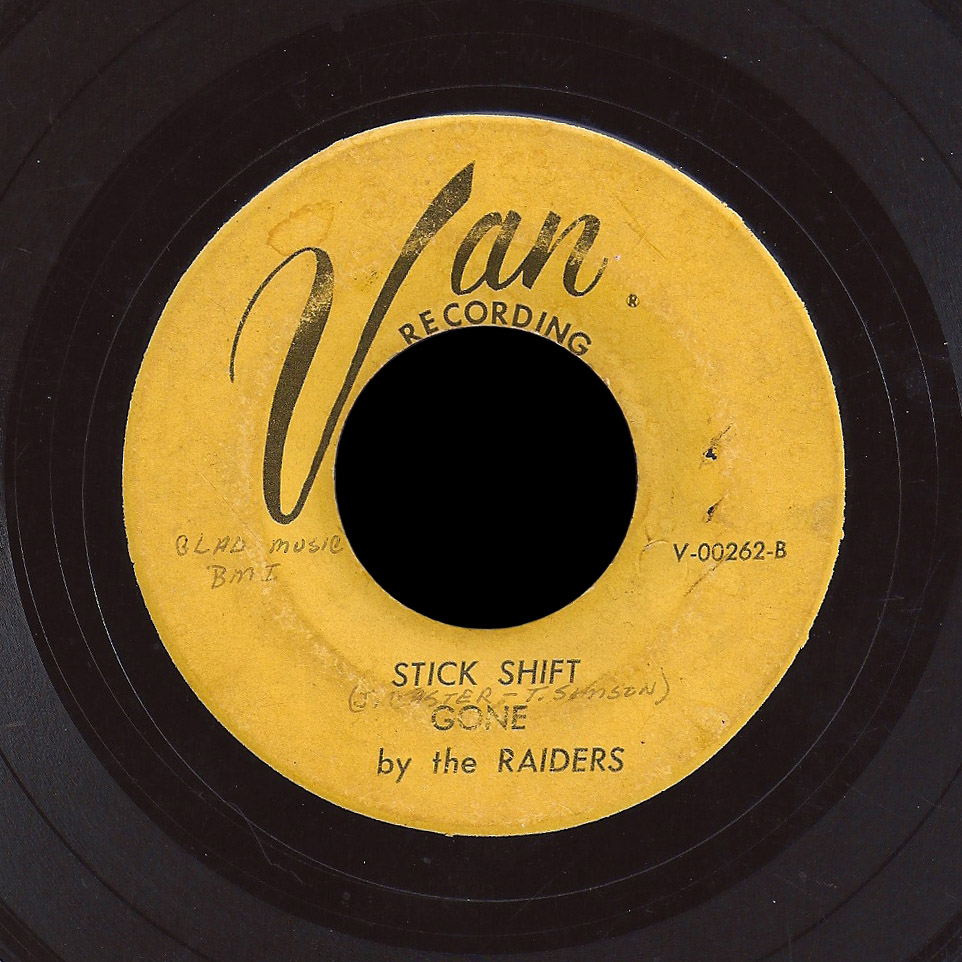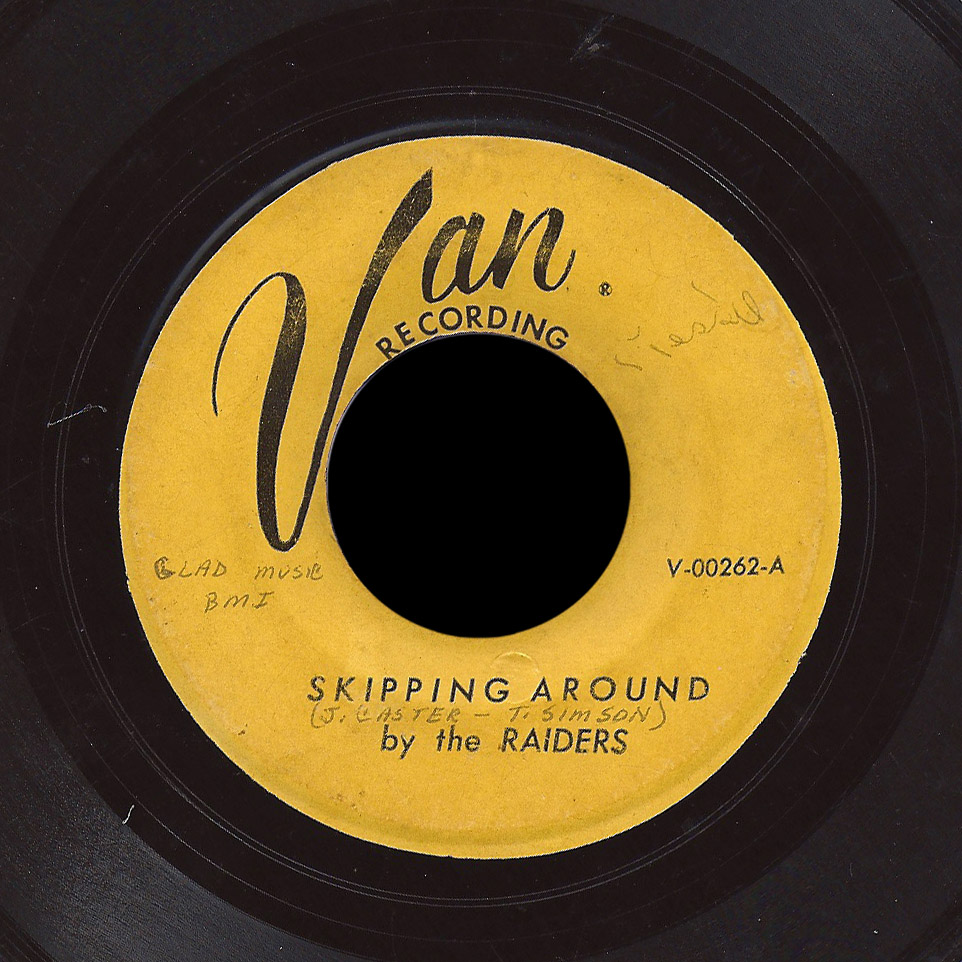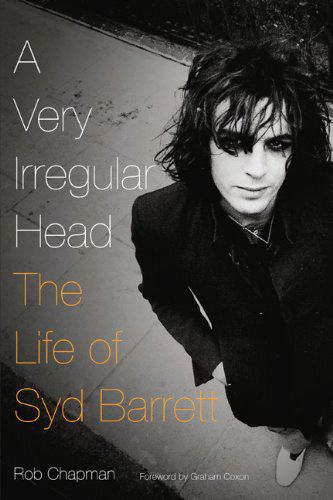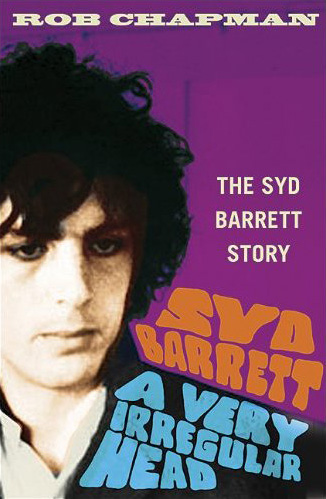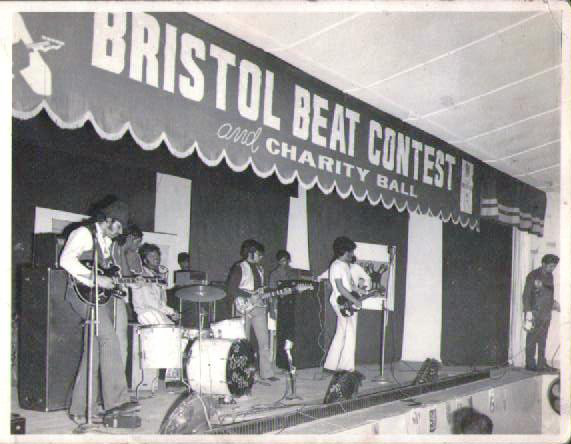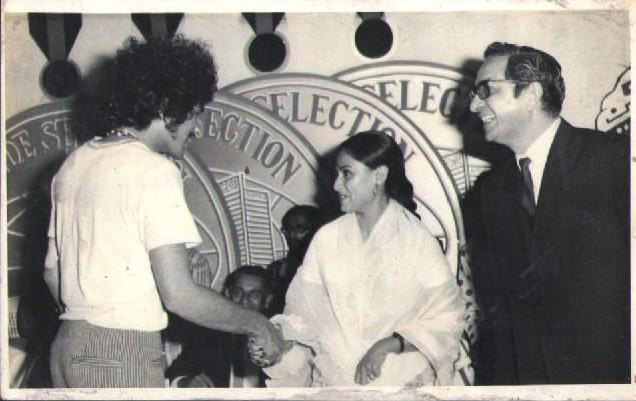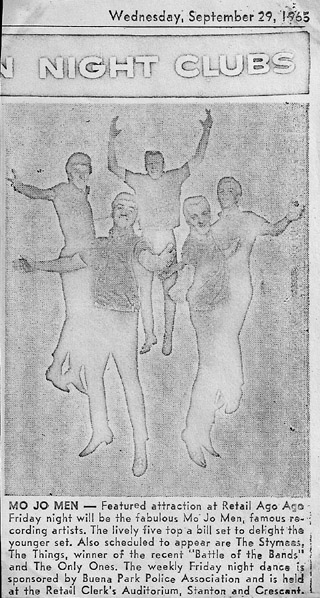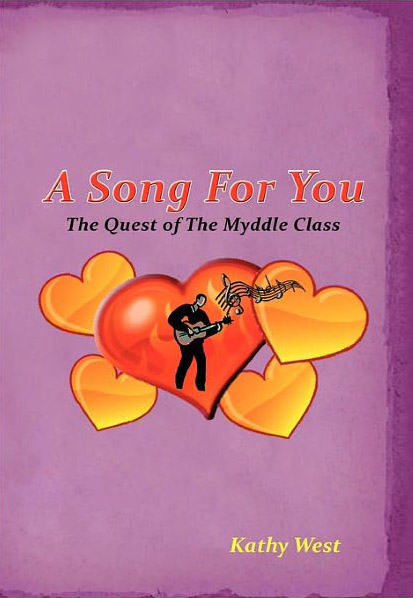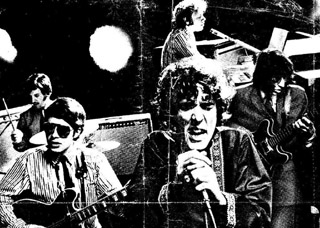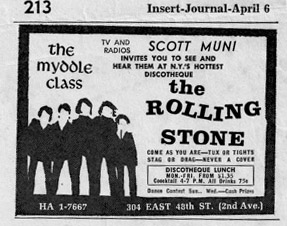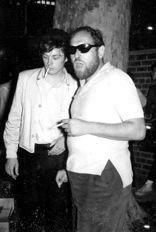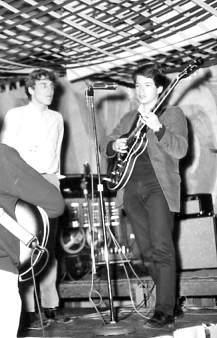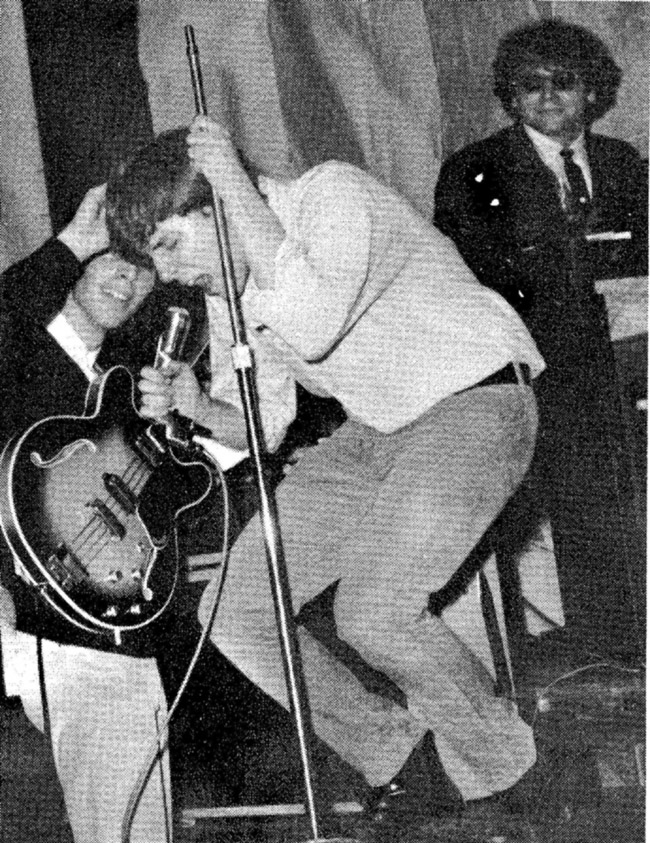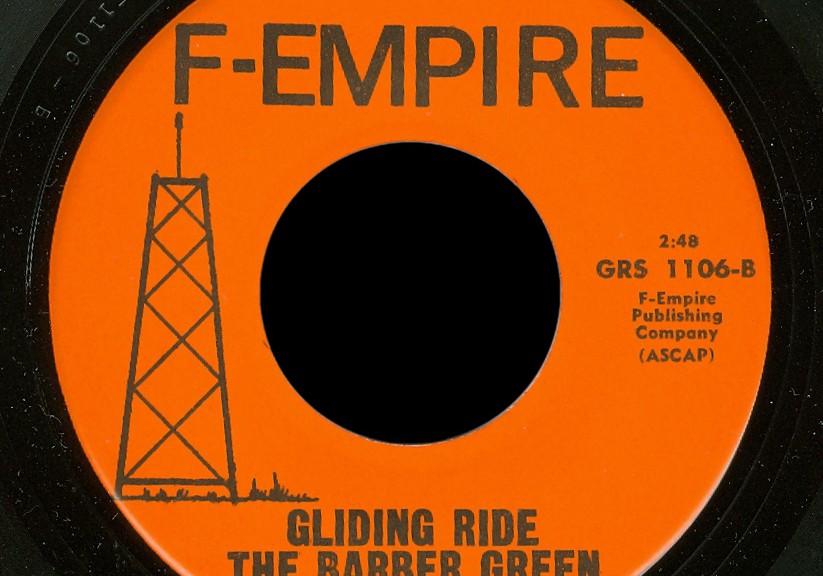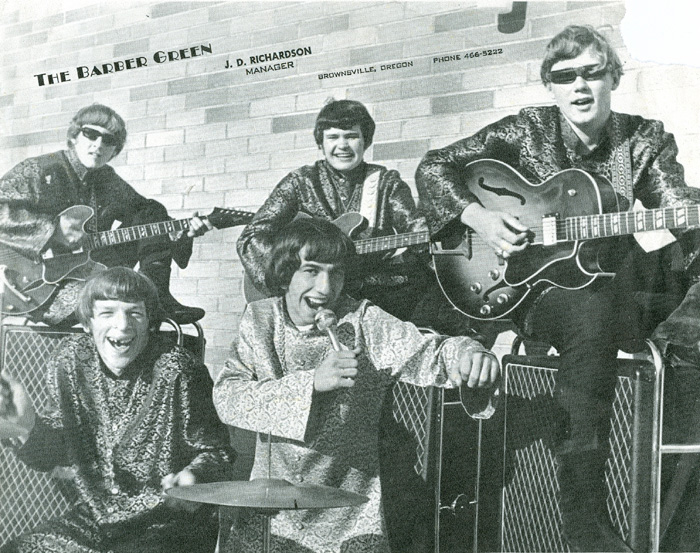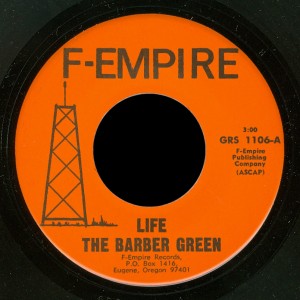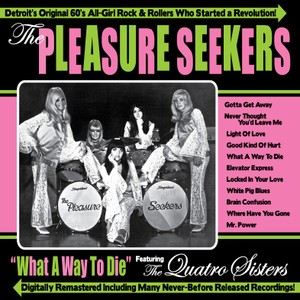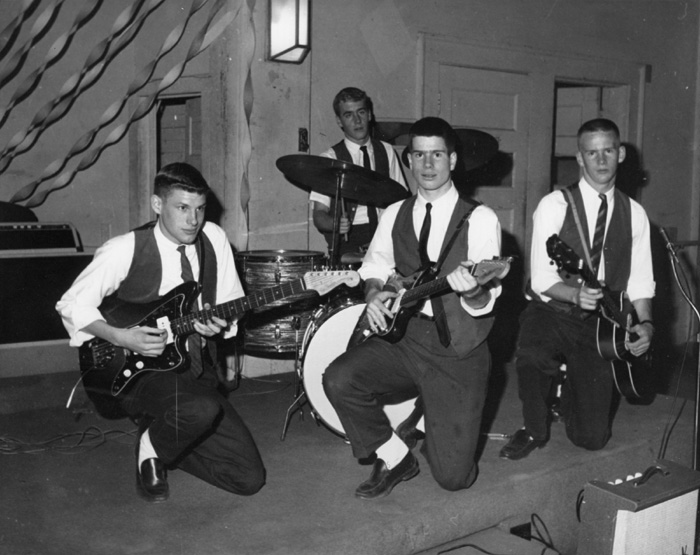
Bob Ellis from the Alabama Record Collectors Association sent me this history of the Ramblers of Birmingham, written by Chip Sanders.
Back in 1961, the guitar playing Terrell brothers, Tommy and Eddie along with classmate Chris Covey found a junior high school drummer, Johnny Robinson, to play music. It was decided that the eldest brother, Eddie, would be the bass player, and Tommy would play rhythm guitar. Fellow Ramsey High School classmate, Van Veenschoten joined in to round out the group and play lead guitar. The group named themselves The Ramblers, and began playing for high school functions and fraternities and sororities in the Birmingham area. When Eddie Terrell received a tennis scholarship and headed to The University of Alabama, The Ramblers had no trouble in convincing Chris Convey, with the unusual nickname “The Spook,” to take over on the bass.
By mid-1962, The Ramblers were playing weekends regularly in and around Birmingham and cut their first record, “Stop That Twisting” / “Hundred Miles Away”, at Boutwell Recording Studio in Birmingham. Shortly thereafter, guitar player Van Veenschoten met Chip Sanders, a junior at neighboring Shades Valley High School, who was a piano player. The Ramblers auditioned Chip on a Sunday afternoon at Van’s parents home in Mountain Brook, and the nucleus of the group, that would become synonymous with “party band” was established.
An important early performance by The Ramblers at a state-wide Alabama high school Key Club Convention gave the group name recognition throughout the state, and soon The Ramblers of Birmingham were playing in Alabama cities and towns from Huntsville to Mobile. Practicing in a store room in the back of Johnny Robinson’s garage in Mountain Brook, Alabama, or in the basement of the Sanders’ home in Vestavia, The Ramblers were truly the proverbial garage band.
By fall of 1963, it was time for more of The Ramblers to make a decision, music or college! They decided on both, and as Tommy and Spook headed off to the University of Alabama and Johnny and Chip still in high school, the group began playing college fraternity parties at the University of Alabama.
By 1965-1966, The Ramblers were working regularly, primarily at Fraternity Parties around the southeast. Eddie, Tommy, Spook, and Chip had all become members of Pi Kappa Alpha fraternity at The University of Alabama, while Van was at Samford University and Johnny at the University of Montevallo. No longer rehearsing on a regular basis, the guys would meet up whenever and wherever the group might be playing.
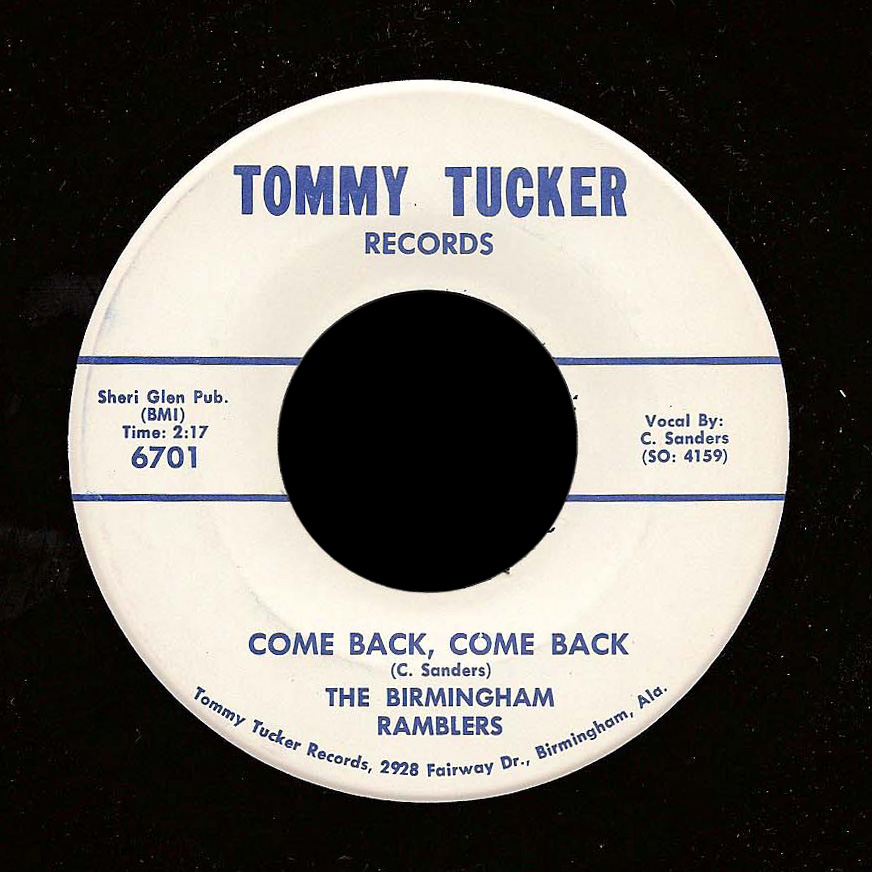 In 1967, the group recorded another record at Boutwell Recording Studio, “Come Back, Come Back” / “Whole Lot Of Woman” written by keyboardist, Chip Sanders. The record experienced moderate success in the Alabama area, but college priorities prevented the group from properly promoting the record. Ed Boutwell, Birmingham recording pioneer, continued to use The Ramblers as back up musicians on many recording sessions at his studio.
In 1967, the group recorded another record at Boutwell Recording Studio, “Come Back, Come Back” / “Whole Lot Of Woman” written by keyboardist, Chip Sanders. The record experienced moderate success in the Alabama area, but college priorities prevented the group from properly promoting the record. Ed Boutwell, Birmingham recording pioneer, continued to use The Ramblers as back up musicians on many recording sessions at his studio.
Throughout this period, local radio station “sock hops” gained popularity amongst the Birmingham teenage population, and The Ramblers worked with local personality Duke Rumore of WYDE radio at Duke’s sock hop at the Ensley National Guard Armory, as well as Dave Roddy, from WSGN Radio at the Aporto Armory, across town. Also during this period the Ramblers were the backup band of choice for singers passing through Birmingham like Bobby Goldsboro or Billy Joe Royal.
As a “special added attraction” The Ramblers added a new set, featuring “Little John,” Chip’s kid brother, 11-year-old John Lee Sanders, who sang and played harmonica. John Lee Sanders, is now a successful song writer, performer and composer in the Bay Area of California. For the last 20 years he has worked with Long John Baldry, Starship, Paul Williams, Linda Arnold, and other popular entertainers.
As 1966-1967 came along, the world was quickly changing and The Rambler’s music began to change as well. Inspired by the psychedelic sounds coming out of the west coast, The Ramblers found a new sound with a young female vocalist, Vicki Hallman. Covers of the Jefferson Airplane, Linda Ronstadt and other female artists were added to their repertoire. After a brief marriage to drummer Johnny Robinson, Vicki continued her career in Nashville as a member of Buck Owens and the Buckaroos group and as a permanent cast member of the long running TV series, Hee-Haw.
With the Viet Nam War continuing to escalate in the late sixties, members of the group began to worry about the draft. This was definitely not the time to quit school and loose a student deferment to become a rock ‘n roll star. At various times during the next few years, Tommy joined George Bush in the Alabama Air National Guard, Chris joined the Coast Guard Reserve, Chip got in the Army National Guard three days before his draft notice, and Johnny became a reluctant member of the Talladega National Guard.
During their respective intermittent absences the group stayed together, with Terrell brother, Eddie, rejoining the group, along with a variety of substitute and fill-in players. As the sixties came to a close, one by one, the group began to graduate from college, get married and begin careers other than music. All the members of the group initially took jobs in Birmingham so that the band was able to stay together, but soon, the pressures of new careers, new wives, and even children began to put a strain on the group. “I don’t remember us ever officially deciding to break up. I just recall playing in a little town somewhere in South Alabama. We all brought our wives. It was a fun weekend. I remember staying in some ‘Bates Motel’ place and we all went swimming in their pool. That’s the last band job I can recall, but there may have been others,” said Sanders.
Johnny Robinson, who had tried to hold things together began touring with a new group, The Homestead Act, and subsequently moved to California to help his new wife start a music career. Chris moved away to seek his fortune, Chip moved near Memphis to start an insurance agency, and Tommy became a bank examiner for the Treasury Department.
The Ramblers were history, or so they thought. They stayed in touch with one another and by 1978 all of the remaining members of the group were thinking the same thing. They wanted to play again.
In 1979, the band regrouped as The Rambler Reunion Band adding Jim Burford on lead guitar to replace Van who died in a motorcycle accident in 1972. Chip moved out of state and was replaced by John Livingston on keyboards. Eddie rejoined the band to replace Chris who resides in Treasure Island, Florida. During the 80’s and 90’s the band continued working around the southeast entertaining at events with their 60’s music. Currently the RRB entertains at wedding receptions, reunion parties, company parties, club dances, and most any event that requires authentic 60’s rock and roll music.
Chip Sanders, 2011
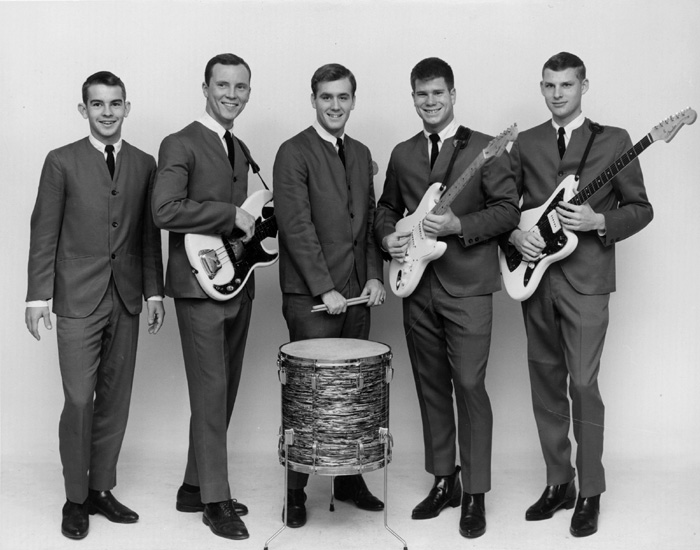
Johnny Robinson answered some follow-up questions I had about the photos and recording sessions.
The picture of the four of us [top of page] was taken at Highland County Club in December 1961. Van played lead guitar, Tommy rhythm guitar, Eddie bass. At this time we had very few vocals. That one mike and the small guitar amp (lower right corner) was our PA system. We bought the vests at Pizitz downtown.
The two professional photos were taken by Ken Ives at his studio in English Village down the street from Boutwell Recording Studio, where we recorded “100 Miles Away”. Chris Convey replaced Eddie on bass when Eddie left for college on a tennis scholarship. We have tons of other pictures through the years.
B.Temple is Brook Temple. He went to Shades Valley High School. We met him through Lee Shook, a mutual friend. Brook wrote “100 Miles away” with words about a girl he dated in Montgomery (100 miles from Birmingham) and asked us to record it. His mother paid for the recording session and the cost of the records. We did not like the words to the song, so we made it an instrumemtal. He also wrote “Stop That Twisting”. The Brook record label is his name. After all his mother paid for everything.
The second record, “Come Back, Come Back” was made in April 1967. The total for the packing slip was $123.10 for 510 records. That made them 24 cents each. The studio time was $300 as I remember. That made the total cost 83 cents each. Of course we did not made the records to make money, we gave most of them away to try and book more jobs. We have other studio recordings and live recordings.
The music scene in Birmingham was very active at this time – 1961 to 1968. The Distortions, Sammy Salvo, Willum Fowler, The Tremolos, Larry Parker, The Nomads, The Strangers, The Reflections, The Brood, and The Gents are just some of the local bands that recorded and released records on labels like Jo-Jo, Vibrato, Vesta, Lemon, Gold Master, Modern Enterprises, Malone, Vaughn-LTD, Malcolm Z. Dirge. There were many more. The ones I listed are part of my 45 collection. Others we were friends with: The Bassmen, Larry and the Loafers, The Kingsmen (not the famous ones), Daze of the Week, and Circus.
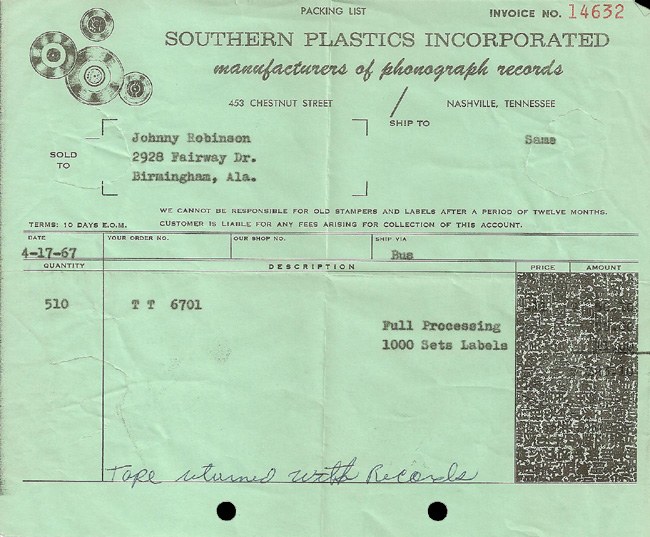
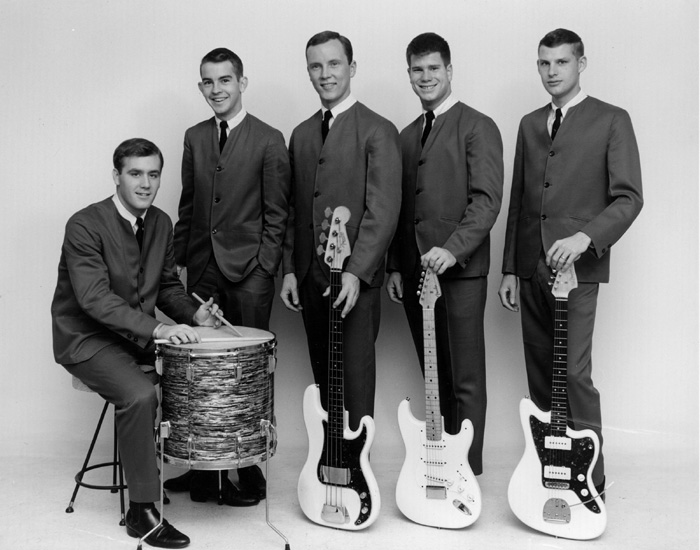




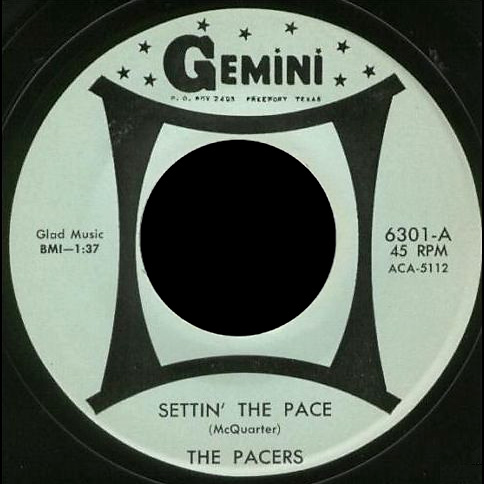 “Settin’ the Pace” has some sharp guitar playing, though the horn lines basically reprise James Brown’s “Good Good Lovin'”. I still haven’t heard the flip side to this, or even know the title, so if anyone has a copy please contact me.”Settin’ the Pace” appeared on a 1988 LP on Gulf Coast Records LP Texas Guitars. Most of the songs on that compilation came from the Van Recording label, which originally led me to think this was a Van release as well.
“Settin’ the Pace” has some sharp guitar playing, though the horn lines basically reprise James Brown’s “Good Good Lovin'”. I still haven’t heard the flip side to this, or even know the title, so if anyone has a copy please contact me.”Settin’ the Pace” appeared on a 1988 LP on Gulf Coast Records LP Texas Guitars. Most of the songs on that compilation came from the Van Recording label, which originally led me to think this was a Van release as well.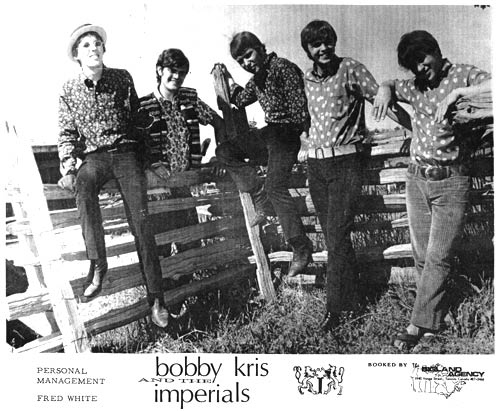
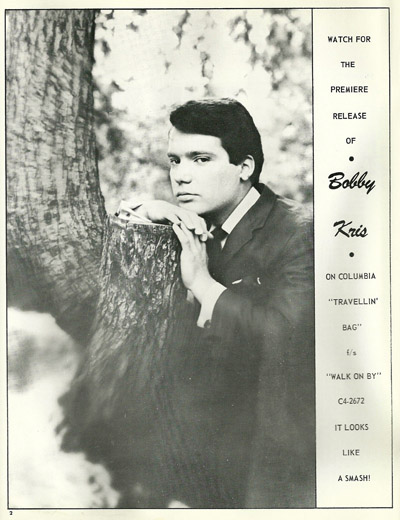
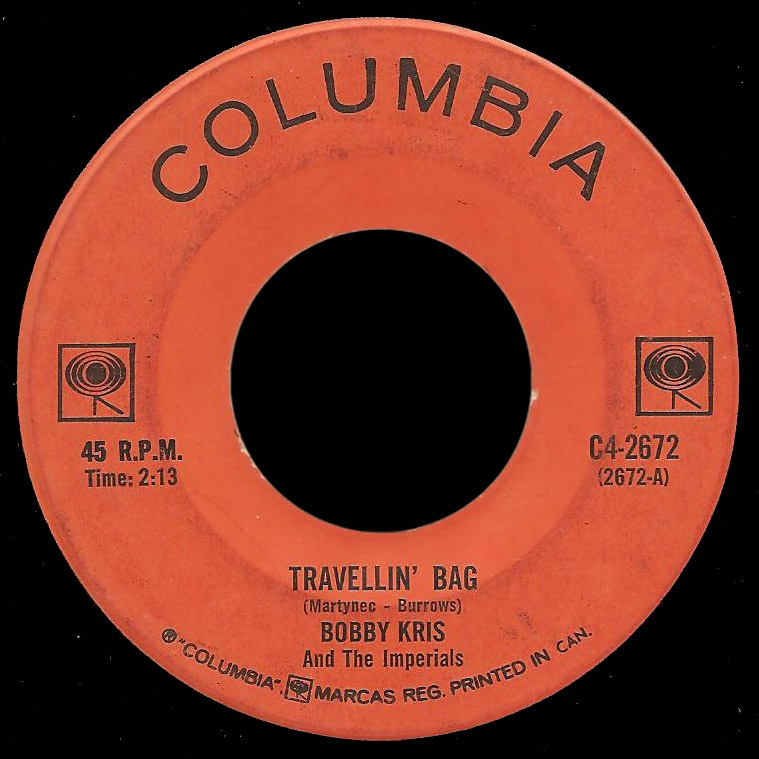
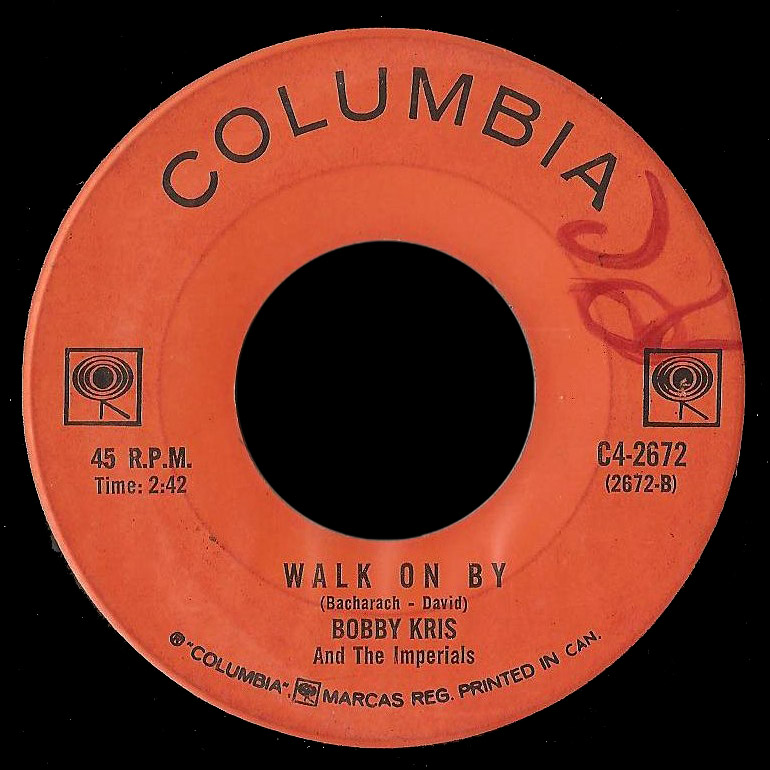
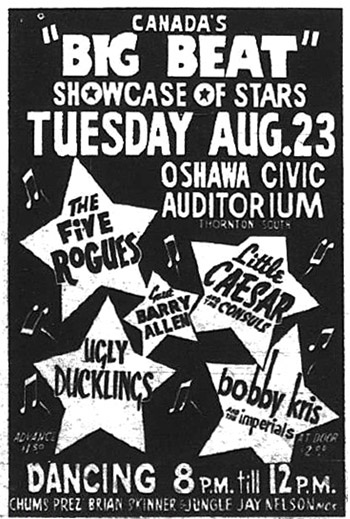
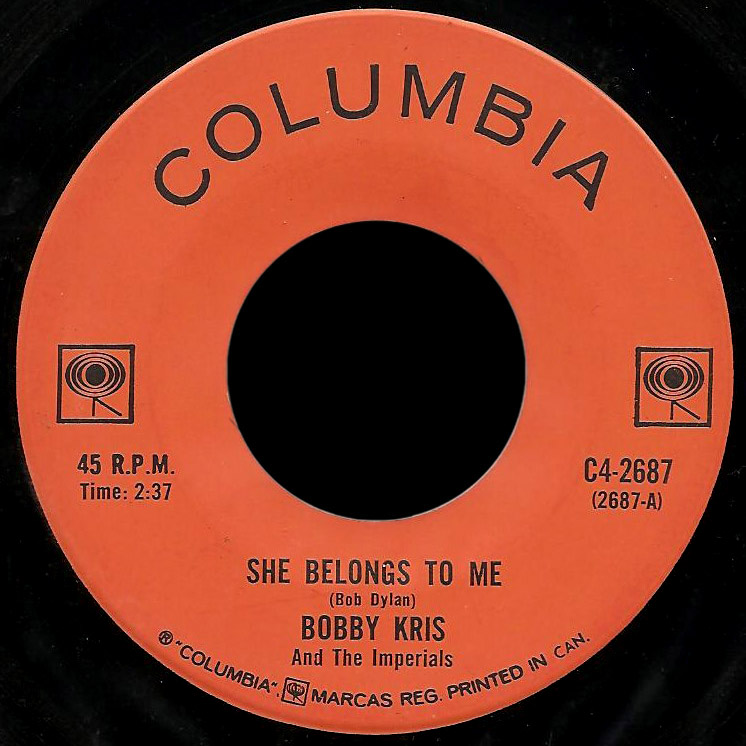
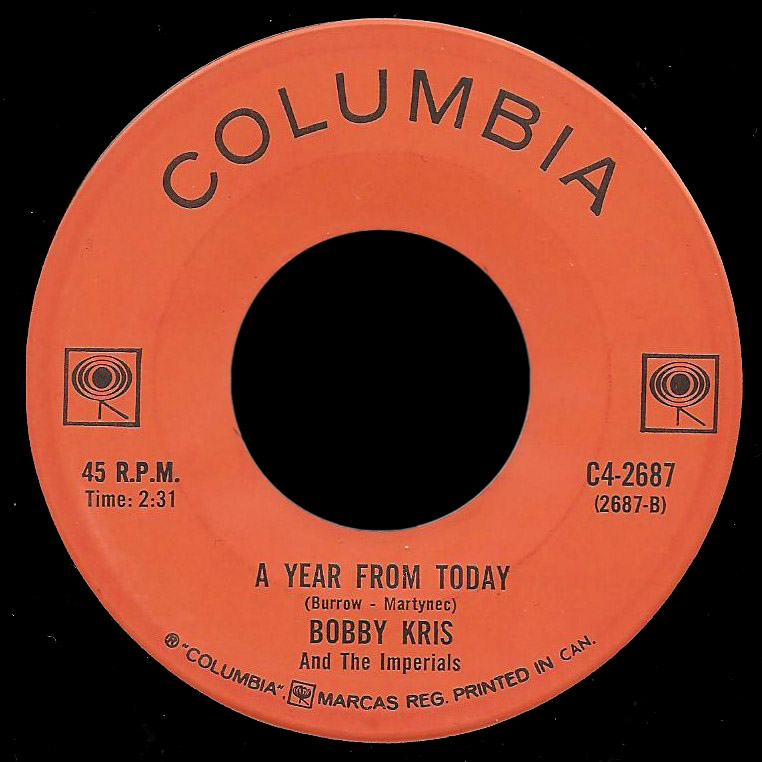
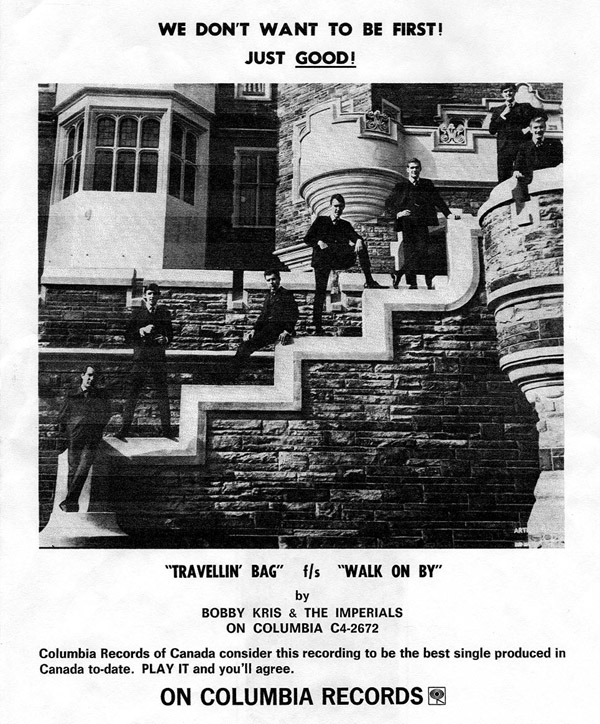
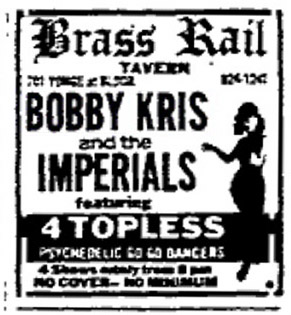
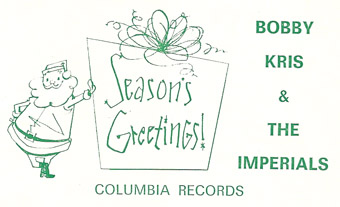
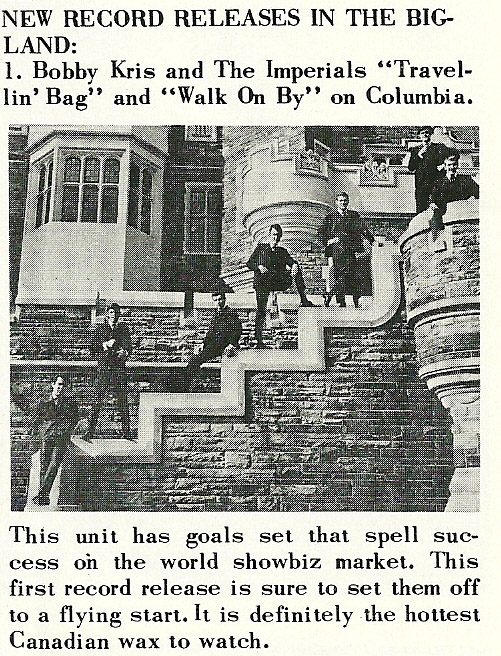
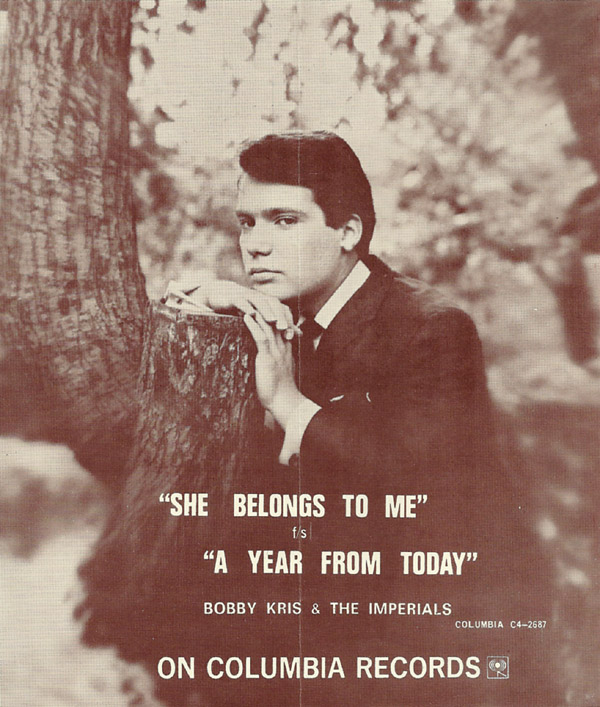

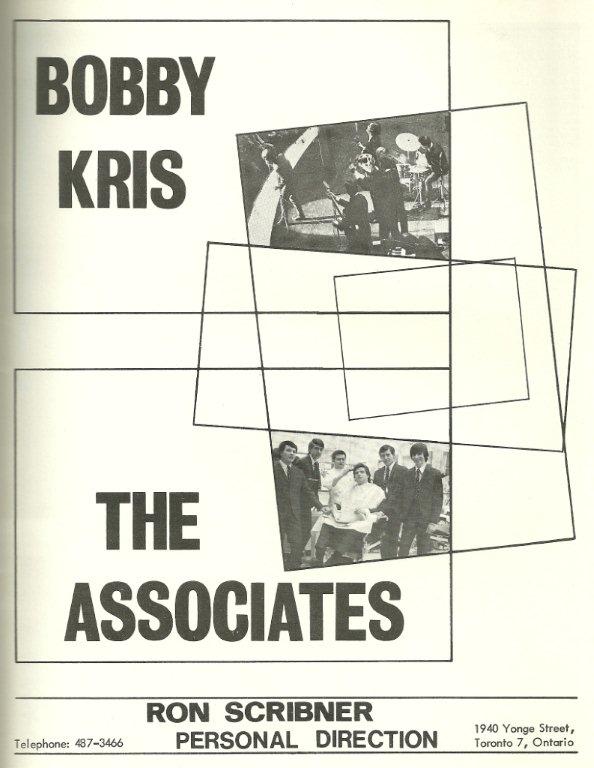
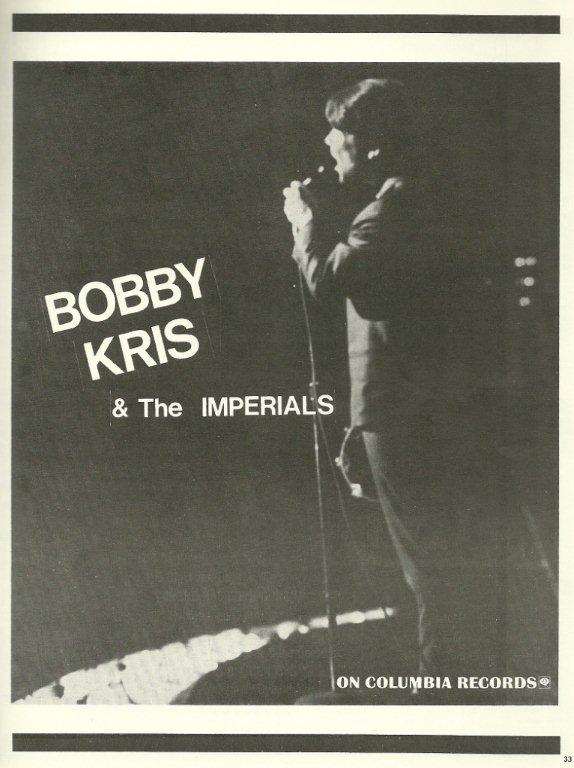
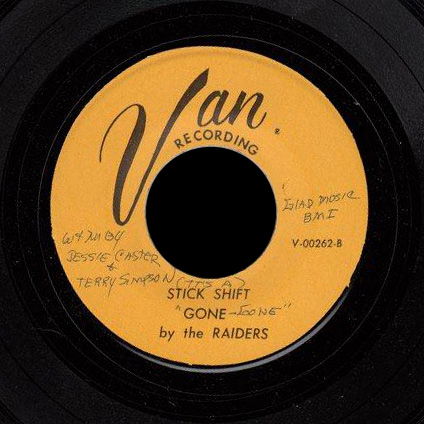
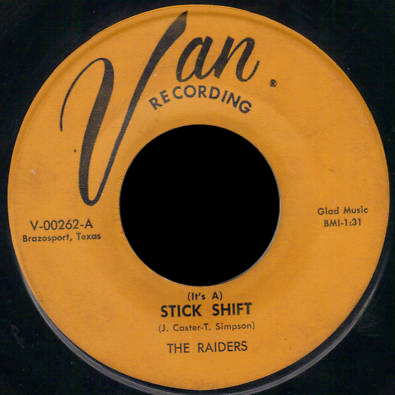
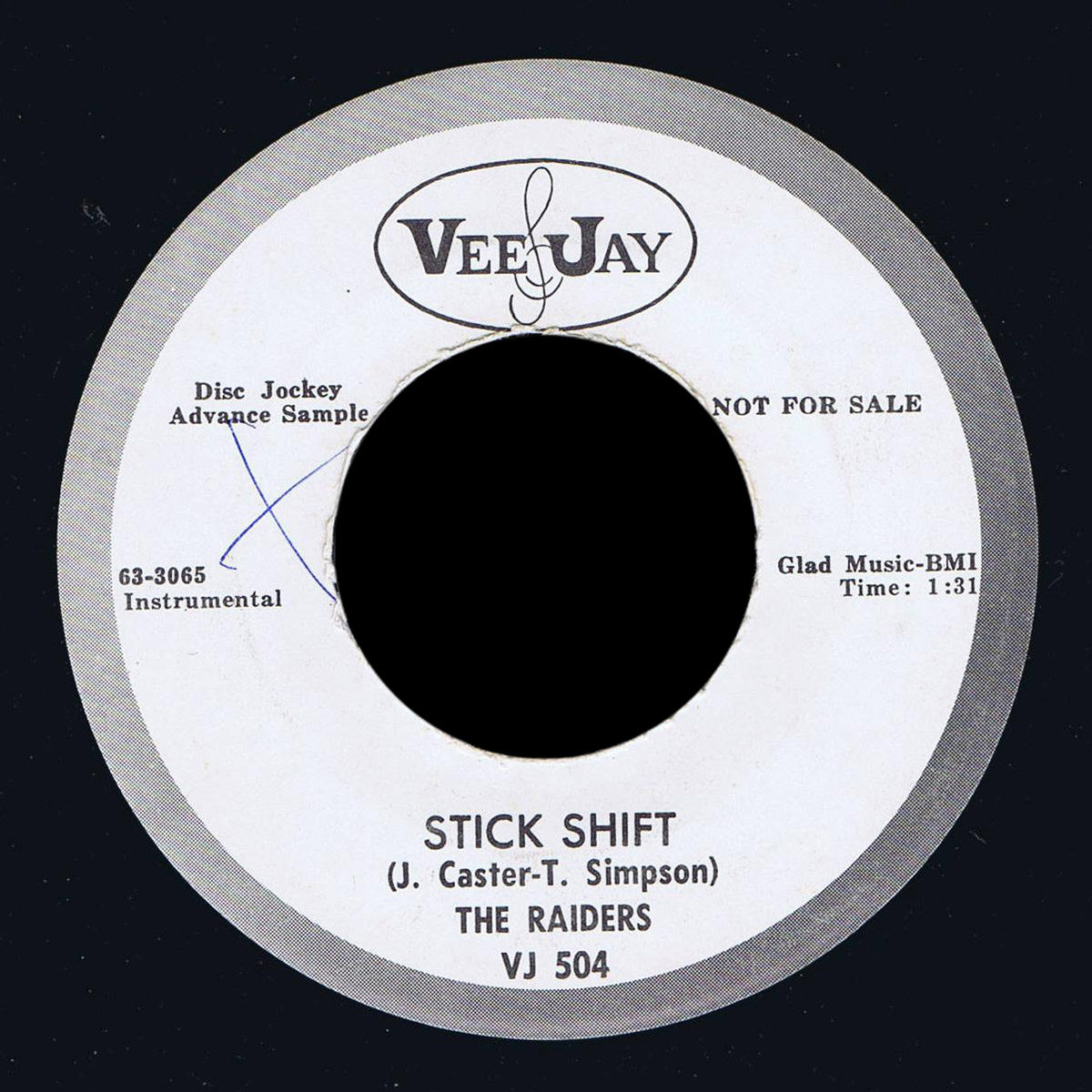
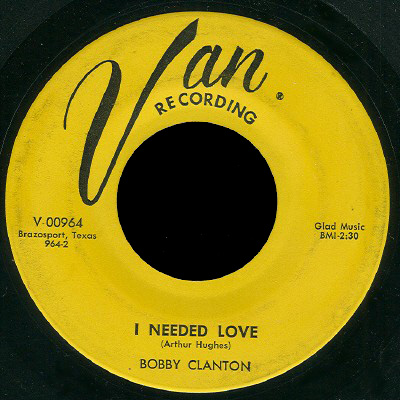 02365 – Larry Dallas – Cheatin’ Woman (Louis Hobbs) / Have I Waited Too Long (also on Majestic 1001)
02365 – Larry Dallas – Cheatin’ Woman (Louis Hobbs) / Have I Waited Too Long (also on Majestic 1001)